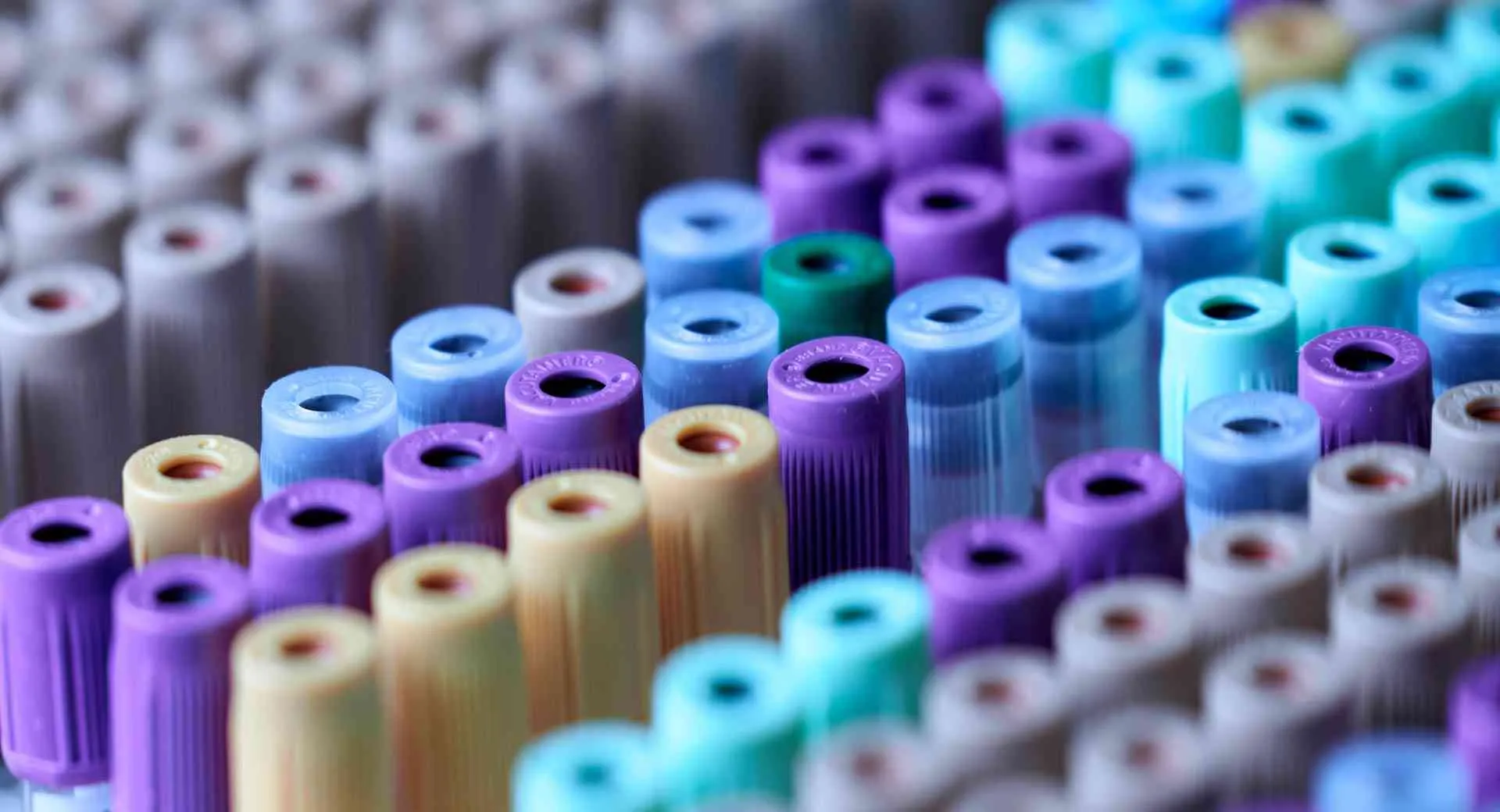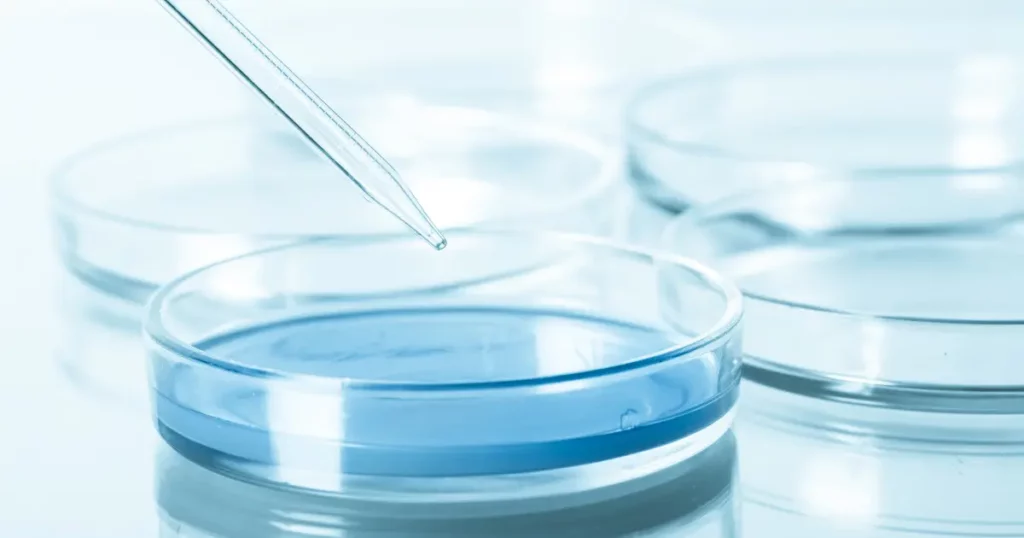Quantum Dots Semiconductor nanocrystals, also known as quantum dots, have a wide range of applications…

6 Common Applications of Hydrogels in Biochemistry
The world of biochemistry is rich with substances and systems that can be applied in every field from the medical to the industrial. For more than 50 years, hydrogels have been among them, emerging as versatile materials due to their unique properties, such as high water content, biocompatibility, and tunable physical and chemical characteristics.
Let’s explore some of the most common applications of hydrogels in the field of biochemistry—as well as some predictions about where they may be in the future.

Table of Contents
What are Hydrogels?
Hydrogels are three-dimensional networks of hydrophilic polymers. Hydrophilic material refers to any molecule that is water-loving, meaning it is drawn to and has a propensity toward mixing with water. Specifically, as Bahram, Mohseni, and Moghtader explain in their paper, these polymers “can swell in water and hold a large amount of water while maintaining the structure due to chemical or physical cross-linking of individual polymer chains.” [1]
Hydrogels undergo transitions as a response to physical or chemical triggers, which might include temperature, light intensity, pressure, and several others. However, “in most cases such conformational transitions are reversible; therefore, the hydrogels are capable of returning to their initial state after a reaction as soon as the trigger is removed.” [1]
Advantages of Hydrogels
Hydrogels offer a wide range of advantages across various fields due to their unique properties and characteristics.
1. High Water Content
Hydrogels are composed of a significant amount of water (typically more than 90% and as high as 99%), which makes them highly compatible with biological systems. This high water content mimics the natural environment of many tissues and cells in the body, promoting biocompatibility.
2. Biocompatibility
Hydrogels are generally well-tolerated by living organisms, making them suitable for a wide range of biomedical applications. They are less likely to trigger immune responses or adverse reactions when used in medical devices, drug delivery systems, and tissue engineering.
3. Moisture Retention
Hydrogels excel at retaining moisture, making them valuable for wound dressings and skin care products. Their ability to create a moist environment at the wound site promotes tissue repair and reduces scarring.
4. Versatility
Hydrogels can be designed to respond to various stimuli, such as changes in pH, temperature, or ionic strength. This adaptability makes them suitable for applications like biosensors, where specific molecular recognition events can trigger a response.
5. Easy Fabrication
Hydrogels can be synthesized through a variety of methods, including chemical crosslinking, physical crosslinking, and self-assembly. Their versatility in terms of fabrication methods makes them accessible for a wide range of applications.
6. Minimal Toxicity and Environmental Friendliness
Hydrogel materials, when properly designed and formulated, are often non-toxic. This characteristic is crucial in medical and pharmaceutical applications to ensure patient safety. Some hydrogels can also be biodegradable or designed to be environmentally friendly, reducing their ecological impact.
Applications of Hydrogels
Because of their wide range of benefits and extreme adaptability, hydrogels have proven handy in dozens of applications in biochemistry. Here are just a few.
1. Applications of Hydrogels: Drug Delivery Systems
One of the most prominent applications of hydrogels in biochemistry is in controlled drug delivery systems. Hydrogels can serve as carriers for controlled drug release, allowing for the sustained and targeted delivery of therapeutic agents.
These drug-loaded hydrogels can be designed to release drugs in response to specific stimuli, such as changes in pH, temperature, or enzymatic activity, mimicking the physiological conditions in the body. This precise control over drug release is essential for optimizing treatment efficacy while minimizing side effects.
2. Applications of Hydrogels: Tissue Engineering
Hydrogels have revolutionized the field of tissue engineering by providing a scaffold that mimics the extracellular matrix (ECM), the natural environment where cells reside. These biomimetic hydrogels create a supportive framework for cell growth and tissue regeneration.
Researchers can customize hydrogels to match the mechanical properties and biochemical cues required for specific tissues, making them ideal for applications like cartilage, skin, and neural tissue regeneration.
3. Applications of Hydrogels: Wound Healing
Hydrogels have demonstrated exceptional potential in wound healing applications, especially as medical dressing. These can act as a protective barrier while maintaining a moist environment at the wound site, promoting cell migration, proliferation, and tissue repair.
Hydrogel wound dressings can also be loaded with bioactive molecules, such as growth factors and antimicrobial agents, to accelerate the healing process and prevent infections. Their flexibility and conformability make hydrogel dressings comfortable for patients while promoting optimal wound-healing conditions.
4. Applications of Hydrogels: Biosensors
Hydrogels have emerged as vital components in the development of biosensors for various biochemical analyses. By incorporating specific receptors or ligands into the hydrogel matrix, these sensors can detect and quantify target molecules, such as proteins, enzymes, or DNA. Hydrogel-based biosensors offer high sensitivity, rapid response times, and low detection limits, making them invaluable tools in clinical diagnostics and research.
5. Applications of Hydrogels: Cell Culture
Traditional two-dimensional (2D) cell culture systems often fail to recapitulate the complex 3D microenvironments found in living tissues. Hydrogel-based 3D cell culture systems address this limitation by providing a more physiologically relevant platform for studying cell behavior, proliferation, and differentiation. Researchers can tailor hydrogels to mimic the specific tissue characteristics and signaling cues necessary for cell growth, making them indispensable in the study of cancer biology, stem cell research, and tissue development.
6. Applications of Hydrogels: Protein and Enzyme Immobilization
In biochemistry research, the immobilization of proteins and enzymes is often required for various applications, such as enzymatic assays, biocatalysis, and affinity chromatography. Hydrogels provide an excellent matrix for protein and enzyme immobilization due to their ability to maintain the native conformation and activity of biomolecules. This enables the creation of robust and reusable biocatalysts and affinity matrices for various biochemical processes.
Final Word on the Common Applications of Hydrogels in Biochemistry
Hydrogels have emerged as indispensable tools in biochemistry, offering a wide range of applications that benefit both research and clinical practice. From drug delivery and tissue engineering to wound healing and biosensors, these versatile materials have revolutionized how researchers and healthcare professionals approach biochemical challenges.
As advancements in hydrogel design and fabrication continue, we can expect even more innovative applications in the ever-evolving field of biochemistry. The future of this versatile material holds promise for improved therapies, diagnostics, and a deeper understanding of the biological world.
Situated in the Research Triangle Park of North Carolina, Creative PEGWorks is a biotechnology firm specializing in the development, production, and distribution of cutting-edge functional polymer products including hydrogels. For more information on hydrogels or their uses in biochemistry, contact us today!
References
1.: M. Bahram, N. Mohseni, and M. Moghtader, ‘An Introduction to Hydrogels and Some Recent Applications’, Emerging Concepts in Analysis and Applications of Hydrogels. InTech, Aug. 24, 2016. doi: 10.5772/64301
Related Posts
- Important Applications For Quantum Dots
- Microstructured Dextran Hydrogels for Sustained Release of PEGylated Protein Drugs
Hydrogels have gained significant attention as ideal delivery vehicles for protein drugs. However, the use…
